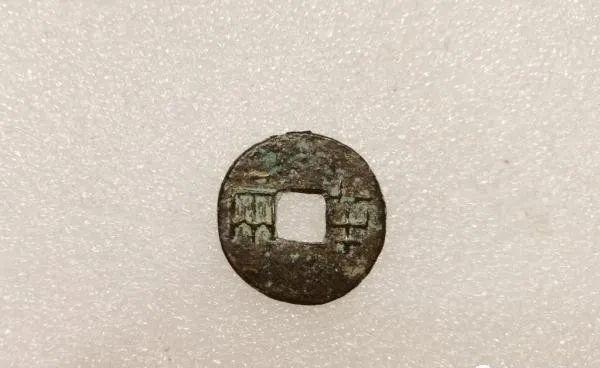The "Great Qin Heroic Wind - Terracotta Warriors and Horses Exhibition of the First Emperor of Qin" is being exhibited at the Museum of the Ruins of the Marquis of Hai of the Han Dynasty in Nanchang, Jiangxi Province, and this exhibition has made the two "big coffee" in the ancient currency circle become neighbors upstairs and downstairs. They are the Qin Half Two and Han Wu Ba who have no chance to meet each other, one south and one north. What are the implications for the Emergence of the two on China's monetary system? You can also guess, Qin half two, Han five baht and today's 5 dime coins, who is the heaviest?

File photo: Qin Banliang (courtesy of the Han Dynasty Hou houguo Ruins Museum in Nanchang, Jiangxi)
First of all, the commonality, whether it is the Qin half two or the Han five baht, they are all made to consolidate imperial power, strengthen rule, and stabilize the economy.
Qin Banliang can be described as the "big brother" in the circle. Fan Lijun, deputy director of the Nanchang Han Dynasty Houguo Ruins Museum, said that Qin Shi Huang unified laws, weights and measures, currency and writing, which stipulates that half and two coins in the outer circle are the currency of the whole country. The coin system was changed to second class, of which gold was the upper coin, with the yoke as the unit; the copper coin with the round square hole was the lower coin, and the coin was "half two", which was used for daily transactions, and private minting was prohibited. As for the weight, the Qin system half two is twelve baht, which is equivalent to about 8 grams now.
File photo: Han Wu Baht (courtesy of the Han Dynasty Hou Hou Guo Ruins Museum in Nanchang, Jiangxi)
The emergence of qin and half two marks the initial maturity of ancient Chinese coins and is a milestone in the development of China's currency. For more than two thousand years after that, the mainland currency basically followed this square hole round shape system, so it was also known as "Hole Square Brother", until the end of the Qing Dynasty and the beginning of the People's Republic, it was replaced by the mechanism copper circle.
After the fall of the Qin Dynasty, the early Han Dynasty inherited the Qin system and still minted half and two coins. However, due to the fact that private minting of coins was allowed at that time, the currency system was chaotic, and even coins such as pods with half sides cut and only 1 gram weight appeared, resulting in economic chaos. It was not until Emperor Wu of the Han Dynasty repeatedly carried out currency reforms, recovered the right to mint coins in the fifth year of the Yuan Hunt, stipulated that ShanglinYuan was a minting institution, and began to mint five baht coins, and the problem was solved.
The Han Wu baht once again realized the central government's centralized unification of the currency minting power. In the Western Han Dynasty, the five-baht coins weighed five baht, the shape was regular, and the casting was excellent. Fan Lijun said that more than 3 million five-baht coins were unearthed in the treasury of the tomb of Liu He in the north of the tomb of Marquis Liu He of Haixia, with a height of 1.8 meters and a total weight of more than 10 tons. This batch of five-baht coins can be subdivided into more than two hundred types according to the marking characteristics on the coins, the font of the money glyphs, the size and weight, etc.
Five-baht coins unearthed from the treasury of the northern tibetan tomb of Liu He of Haixia. (Courtesy of Jiangxi Institute of Cultural Relics and Archaeology)
If the Qin half two laid the shape of the outer circle and the inner square of the coin, then the greatest contribution of the Han five baht should be its weight. Fan Lijun said that the "Han Wu Baht" piece weighs about 3 grams to 4 grams. It not only influenced the coinage of subsequent Chinese dynasties, but also weighed as much as many common currencies abroad. This fully shows that it is consistent with the level of socio-economic development and circulation needs. Amazingly, to this day, the five-cent coin we use (3.8g) is also within this range.
Collecting fun is endless
Famous people talk about collecting
Share some of your favorites with you